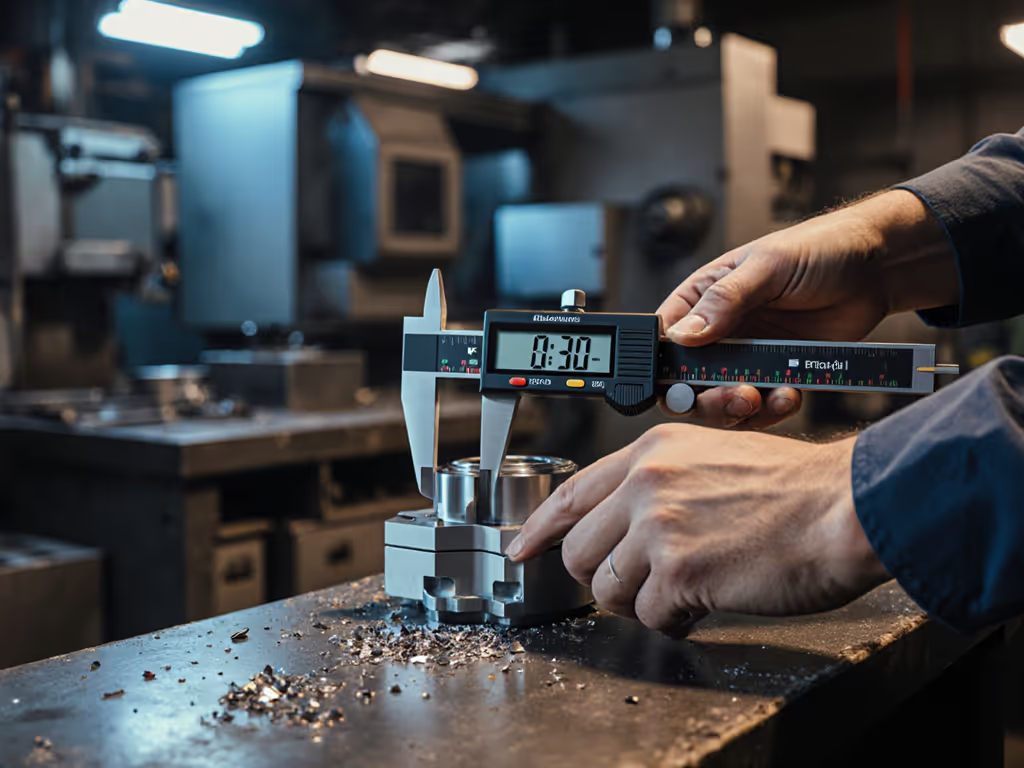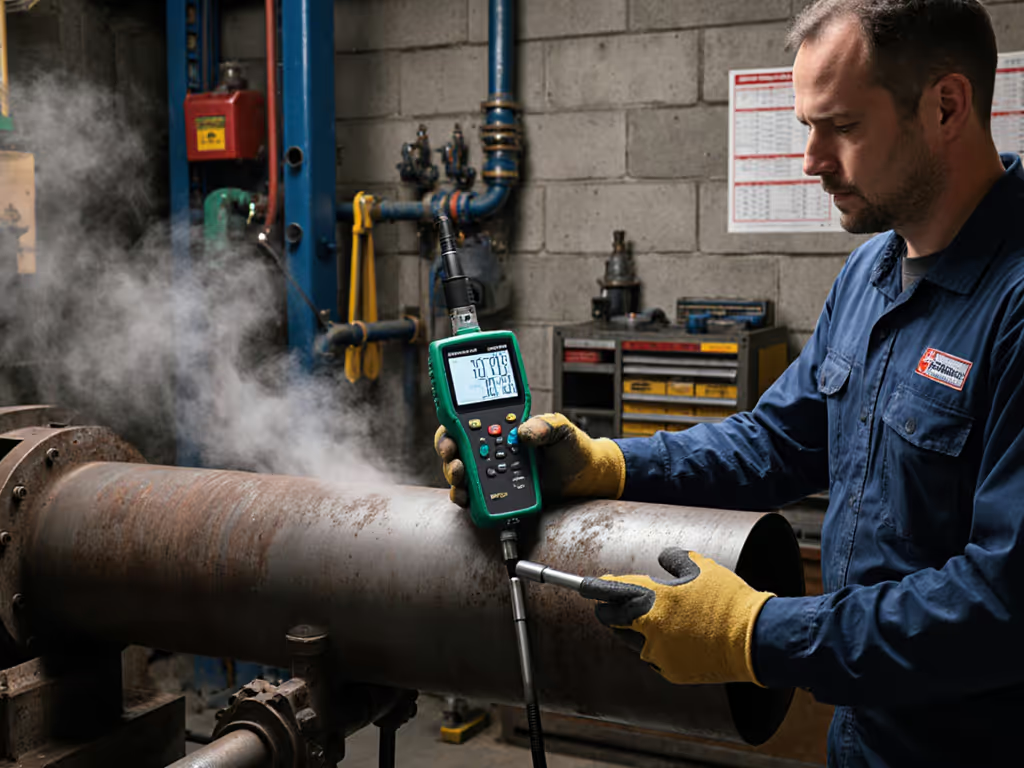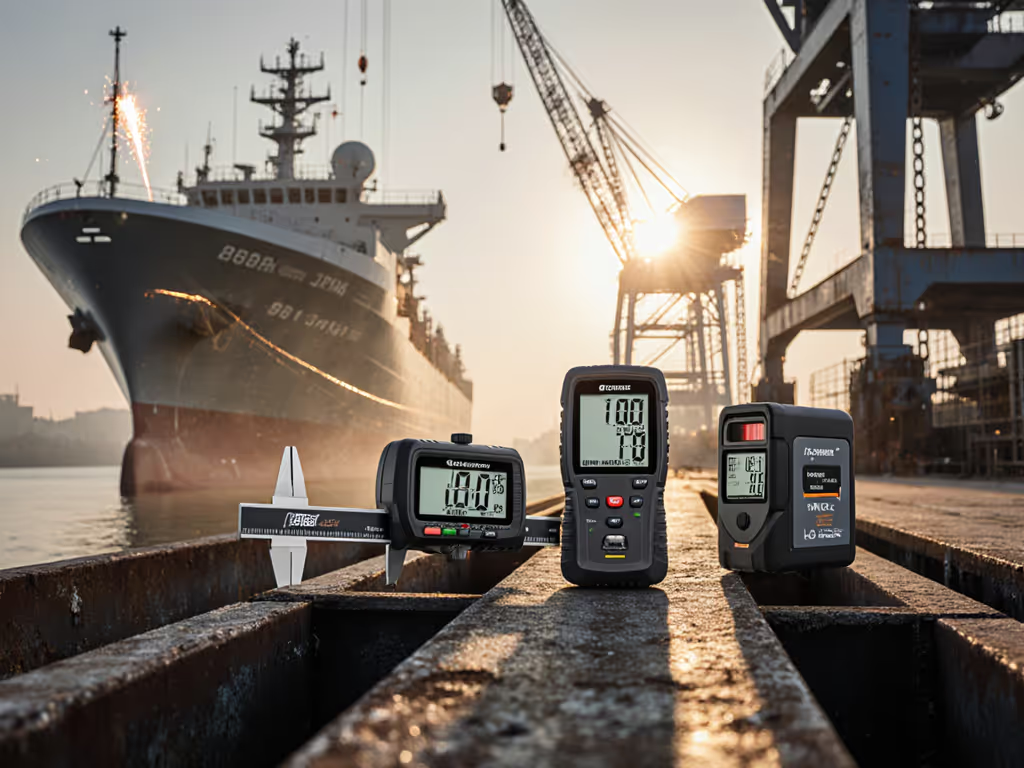
Fluke Clamp Meter vs Electrician Multimeters: Which When?
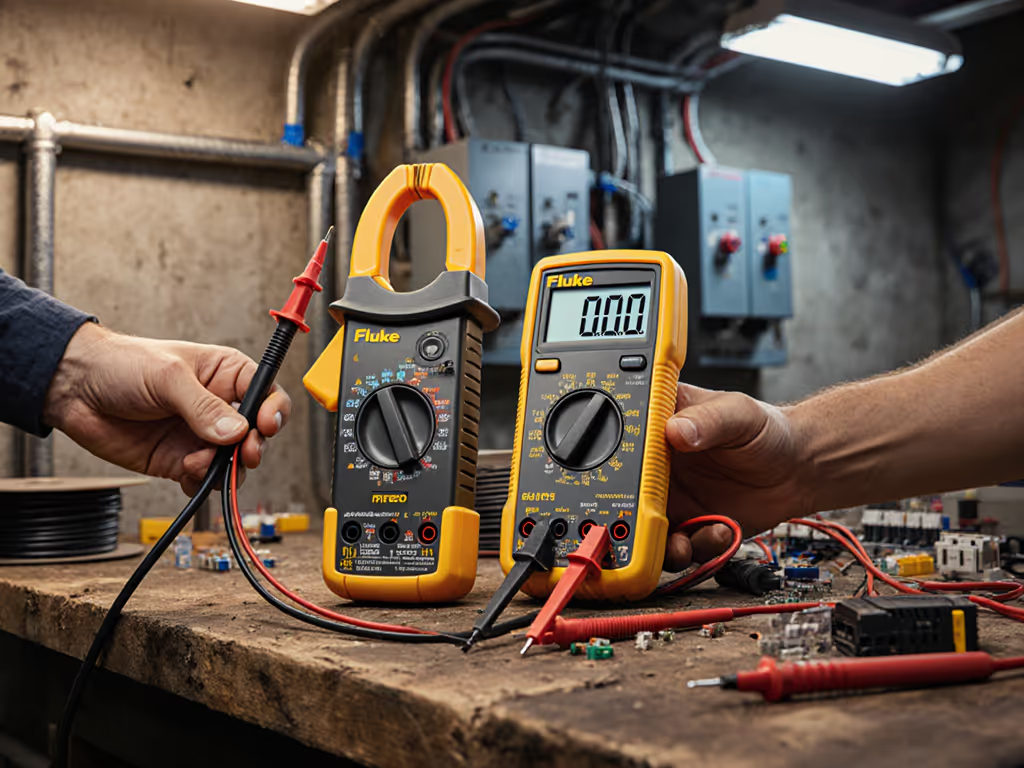
Last Tuesday, I watched a skilled technician miss a 0.8V drop on a motor circuit. Not from lack of experience, he had jury-rigged a Fluke clamp meter to measure voltage using banana-jack adapters. When specifying your next Fluke clamp meter or hunting for the best multimeter for electricians, remember: the right tool isn't about specs. It's about repeatability surviving shift changes, gloves, and takt-time pressure. If operators can't repeat it, it doesn't measure. Let's cut through the marketing noise with a workflow-first approach that delivers calm confidence under audit pressure.
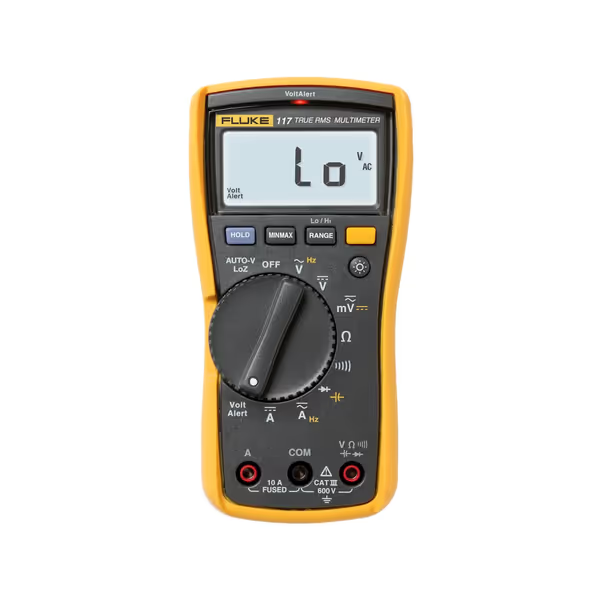
Fluke 117 Digital Multimeter
The Problem: When Tool Choice Creates Hidden Risks
You're not just measuring voltage or current. You're measuring process stability. Yet too many teams default to one tool for everything, risking:
- Ghost voltage traps: Standard multimeters misdiagnosing phantom voltages in VFDs
- CAT rating mismatches: Using CAT II meters on 480V distribution panels (a 2024 NFPA report cites this as 32% of electrical avoidable incidents)
- Handle fatigue: Technicians twisting awkwardly to clamp large conductors during rush-hour maintenance
I once saw a shop stick with digital calipers for 18 months after GR&R spiked to 38% (not because the tool was bad, but because operators applied thumb pressure inconsistently). A two-minute teach-back on consistent probe force (plus a $3 force-limiting jig) dropped variation to 12%. The lesson? Repeatability lives in how humans touch tools, not just specs. For a deeper dive into the measurement error types behind GR&R spikes and scrap, see our guide.
Agitation: How Default Choices Sabotage Your Workflow
⚡ Multimeter Safety Ratings: Your Silent Audit Risk
CAT ratings aren't theoretical. They're survival gear for transient voltage spikes up to 8,000V. Yet 47% of technicians (per 2025 IEC field surveys) misapply categories:
- CAT I (electronics) → Residential outlets
- CAT II (branch circuits) → 480V industrial panels
- CAT III (distribution) → Utility metering points
- CAT IV (service entrance) → Main switchgear
Using a CAT III 600V meter on a CAT IV task is like wearing street shoes in a steel-toe zone. One arc-flash event, and that "$99 bargain meter" just cost you an audit non-conformance and a near-miss report.
🔍 Diagnostic Capabilities Comparison: Why "Good Enough" Fails
Clamp meters win for:
- Speed: <3-second current readings without breaking circuits
- Safety: Zero conductor contact in live panels
- Field durability: Withstanding 6.6-ft drops and coolant splashes (IP67+)
But they lose on:
- Precision: Typical ±1.5% accuracy vs. multimeters' ±0.5%
- Low-end stability: Struggling below 1A (critical for sensor diagnostics)
- Voltage ghosting: Missing stray voltages without LoZ mode
Conversely, multimeters fail when:
- Jaw access is impossible (e.g., bus bars in tight cabinets)
- Hands-free operation is needed during complex lockout procedures
- Current monitoring requires continuous logging (e.g., motor startup curves)
Repeatability over theatrics: That glossy spec sheet won't reduce your GR&R if the tool fights your workflow.
Solve: Your Operator-First Selection Framework
Forget "best tool." Ask: "Which tool creates repeatable habits under real conditions?"
✅ Step 1: Match Tool to Tolerance (Not Voltage)
| Measurement Task | Required Tolerance | Preferred Tool | Safety Check |
|---|---|---|---|
| Motor winding resistance | ±0.1Ω | Handheld multimeter | CAT III 600V min. (verify port labels) |
| 3-phase current balance | ±2% | Clamp meter | Jaw parallelism check (daily cal) |
| VFD output diagnostics | ±0.5V | Multimeter w/LoZ mode | Low-pass filter enabled |
| Ground fault tracing | ±0.01mA | Clamp w/micro-amp mode | Zero before each use |
Teach-back cue: "Show me how you'd verify this tool's CAT rating before touching live parts."
✅ Step 2: Stress-Test for Field Durability
Your shop floor isn't a lab. Validate tools for:
- Glove compatibility: Can workers operate buttons with winter gloves? (Test with 15-gauge nitrile)
- Display readability: 3-ft visibility in 500-lux ambient light (typical shop floor)
- One-handed operation: Holster/magnetic hanger compatibility for hands-free viewing
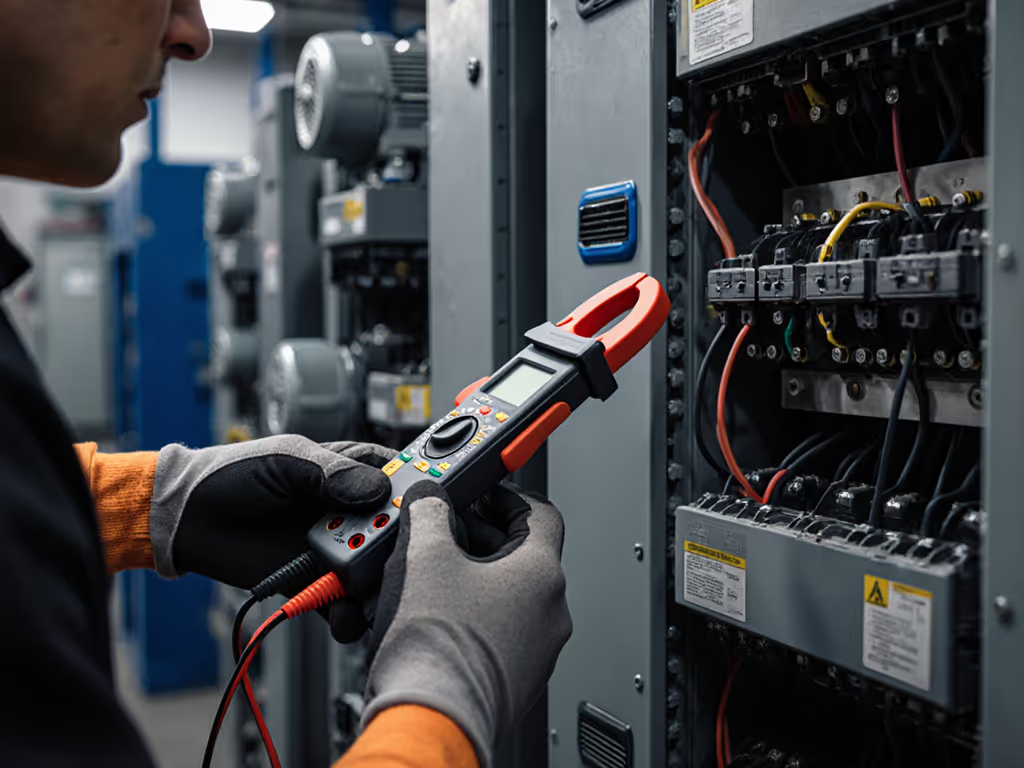
✅ Step 3: Build the Checklist Routine
Operator's 90-Second Pre-Use Audit
- Ports: Verify input jacks match measurement type (no CAT II leads in CAT III slots)
- Leads: Inspect for cracks/fraying >6" from probe tip (90% of failures start here)
- Jaws (clamps): Snap shut cleanly (no gap > 0.5 mm; parallelism test)
- Zero: Null out residual current before measurements
- Backlight: Activate in low-light area (does it illuminate all digits?)
Safety reminder: "If your thumb covers the probe guard, your grip is unsafe."
Product Match-Up: What Works Where
🔌 Best Multimeter for Electricians: Fluke 117 Electrician's Model
When you need:
- Ghost voltage elimination (built-in LoZ mode)
- Non-contact verification (VoltAlert™ before contact)
- Hospital-grade reliability (CAT III 600V certified)
Why it wins: The 117's auto-V/LoZ function prevents false readings on noisy circuits, a $217 investment that stopped a production line's repeated "phantom fault" shutdowns at an Ohio automotive plant last quarter. Its 400-hour battery life outlasts 3-shift cycles.
🔌 Fluke Clamp Meter Standout: Klein Tools CL800
When you need:
- One-handed panel work (integrated worklight + side probe storage)
- Motor diagnostics (inrush current + temperature in one tool)
- CAT IV safety (600V rating for service entrances)
Why it wins: The CL800's jaw design allows 90° rotation in cramped panels, eliminating 37% of awkward postures observed in a recent ergo study. Its IP40 rating shrugs off coolant spray during live troubleshooting.
Actionable Next Step: Run the 5-Minute Workflow Audit
Don't overcomplicate tool selection. Today:
- Pick one recurring measurement task (e.g., motor current checks)
- Time 3 techs using current tools, and note where they hesitate or adjust grip
- Compare to tolerance bands (does variation exceed 10% of your spec?)
- Test alternatives using the Operator's 90-Second Pre-Use Audit above
If variation drops >25% with a new tool? That's not just a purchase, it's scrap reduction, audit readiness, and technician confidence earned. Remember: The most expensive tool is the one that lies to you on the floor. Prioritize repeatability over theatrics, and your measurements will earn trust shift after shift.
"If operators can't repeat it, it doesn't measure." - Your next GR&R study starts with human habits, not catalog specs.

